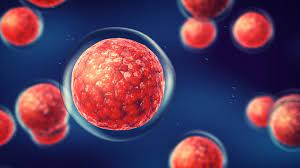How Stem Cell Therapy Is Transforming Foot Injury Recovery
Our feet are the underpinning of virtually all of what we do from walking and running to posture and balance. And though they are so vital, they are also some of the most often injured structures in the body. Sprains, torn ligaments, tendon injuries, and even long term syndromes like plantar fasciitis or arthritis can significantly restrict mobility and quality of life. Conventional rehabilitation techniques tend to address symptoms, but regenerative medicine is changing the treatment process to heal.
Stem cell therapy is now one of the most exciting developments in the field of regenerative medicine, potentially bringing new hope to patients with chronic or persistent foot injury. Through the activation of the body’s own natural repair processes, this treatment has the potential to speed tissue healing, minimize inflammation, and even re-grow injured tissues, results that other treatments often fail to provide.
In this article, we’ll explore how stem cell therapy works, why it’s becoming a go-to option for musculoskeletal repair, and how it plays a transformative role in recovery from complex foot injury treatment cases.
Understanding Stem Cells: The Body’s Natural Repair System
Stem cells are special because they possess the extraordinary capacity to differentiate into other forms of cells like muscle, tendon, cartilage, or bone based on where they are required. They also emit growth factors and signaling molecules that initiate the body’s own healing process, dampen inflammation, and attract other cells to help repair.
In clinical use, stem cells are most commonly taken from a patient’s own bone marrow or adipose (fat) tissue. When gathered, they are processed and injected into the damaged site. There, they start their job healing tissue, calming inflammation, and restoring structural support from the inside out.
How Regenerative Healing Differs from Conventional Care
Conventional methods of treating foot injuries rest, physical therapy, medications, or even surgery tend to be symptom driven instead of tissue regenerative. They might alleviate pain and enhance function, but they don’t necessarily treat the initial damage. Stem cell treatment, however, gets to the cause by directly regenerating injured tissues and reestablishing regular biological function.
This regenerative treatment is particularly useful for slow to heal or non healing injuries, like ligament sprains, tendon ruptures, or cartilage wear. By providing the body with a concentrated reservoir of healing cells, stem cell therapy promotes faster healing and in many cases eliminates the necessity for more complex interventions.
Accelerating Recovery in Foot Injuries
Foot injuries pose a special challenge since they support the full body weight and undergo stress constantly as the body moves. This slows down and complicates healing, particularly when chronic inflammation or compromised circulation are involved. Stem cell therapy answers these challenges head on by inducing tissue regeneration and optimizing the healing environment within the foot.
Patients who have conditions like plantar fasciitis, Achilles tendon damage, stress fractures, or cartilage injuries have reported notable improvement after regenerative treatment. Stem cells injected into the affected tissue incorporate themselves and enhance the development of new, healthy cells while facilitating the return of structural support to the damaged area.
Lessening Inflammation and Pain Naturally
Inflammation is a two edged sword necessary for healing to begin but detrimental if it becomes prolonged. Chronic inflammation is a prevalent cause of unhealed foot injuries. Stem cells regulate the inflammatory response by secreting anti inflammatory factors and signaling molecules that quiet excessive immune response.
The outcome is a more harmonized healing environment for regenerating tissue, minimizing pain and swelling. For the majority of patients, this equals sooner mobility and a reduced risk of recurring injury.
Improving Structural Integrity and Long Term Results
One of the greatest strengths of stem cell therapy is its capability to enhance tissue quality and longevity, rather than merely repair what’s been destroyed. Tissue grown back from stem cells is sometimes stronger and more resilient than the formative scar tissue produced by traditional healing. This makes subsequent injuries less probable and improves long term joint and ligament welfare.
In addition, stem cell therapy may be coupled with other rehabilitative methods, including physical therapy, orthotics, or shockwave therapy, to enhance further results. This combined method guarantees that patients not only heal quicker but also become stronger, more flexible, and confident once again in movement.
A Game Changer for Chronic and Complex Injuries
Whereas stem cell therapy is life changing for acute injuries, it’s especially life altering for chronic diseases that haven’t yielded to traditional therapies. Those who have suffered from persistent pain, impaired mobility, or failed surgeries frequently discover that regenerative treatment gives them the solution they’ve been looking for.
The capacity to actually repair tissue instead of merely palliate symptoms is why stem cell therapy is such a cutting edge and promising technology in contemporary orthopaedic practice. It is also an excellent choice for older patients, whose inherent capacity to heal may be diminished, allowing them to walk and function longer.
The Future of Musculoskeletal Healing
The recent breakthroughs in regenerative medicine are revolutionizing the way we restore injury recovery beyond symptom suppression to true regeneration. Stem cell therapy is leading the charge, with a scientifically supported, minimally invasive, and extremely efficient means for restoring sophisticated musculoskeletal injuries.
For the patient with chronic or intractable foot conditions, this therapy is more than another therapy; it’s a chance to recover from the inside out and achieve full, ache free mobility. As research advances and technology changes, the future of recovery from injury will evermore involve the body’s inherent ability to reconstruct itself with stem cells taking center stage.


Leave a Reply
Want to join the discussion?Feel free to contribute!